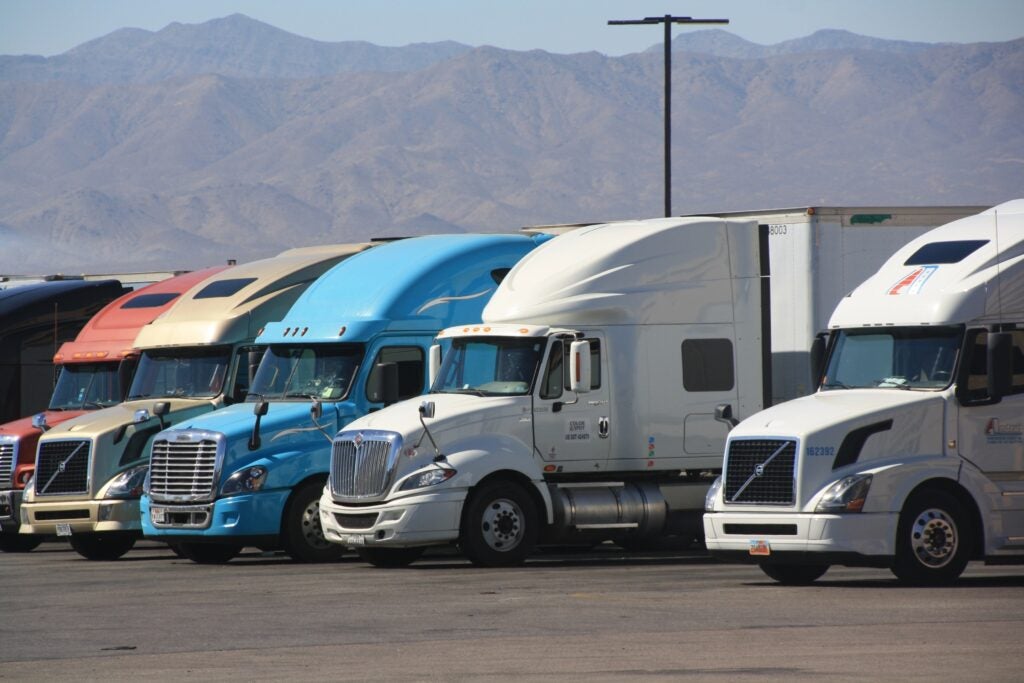Southern California’s novel warehouse rule is reducing truck pollution
A new report from South Coast Air Quality Management District shows the District’s groundbreaking warehouse Indirect Source Rule is catalyzing hundreds of zero-emission truck acquisitions and, as result, reducing hundreds of tons of health-harming nitrogen oxide and small particulate matter pollution.
The report, which charts compliance with the Indirect Source Rule from 2021 through 2023, shows that the rule has resulted in the acquisition of 203 zero-emission yard trucks across 109 warehouses, 172 ZE Class 8 trucks across 25 warehouses, 53 ZE Class 4-7 trucks across nine warehouses and 389 Class 2b-3 Trucks across 16 warehouses. It has also spurred adoption of nearly 340 charging stations.
Southern California’s novel warehouse rule is reducing warehouse pollution Share on XThe result? It’s reducing 0.86 tons of nitrogen oxide pollution per day, demonstrating it is well on its way to reducing the projected 1.5-3.0 tons of nitrogen oxide pollution per day — an amount expected to result in 150 to 300 fewer deaths; 2,500 to 5,800 fewer asthma attacks; 9,000 to 20,000 fewer work loss days and $1.2 to $2.7 billion in health savings from 2022-2031.
Policy innovation for public health
ISR is a decade’s-old mechanism to reduce air pollution, but South Coast Air Quality Management District’s warehouse ISR, which is part of its WAIRE program, is the first instance an ISR is being applied to reign in pollution from the rapidly expanding e-commerce industry. It requires warehouse operators to earn a specified number of points via a flexible menu of compliance options to facilitate local and regional emission reductions associated with warehouses subject to the rule, and the mobile sources attracted to these warehouses.
E-commerce revenue approximately doubled in the United States in the past five years, and the accompanying diesel truck traffic that swarms warehouses poses a major health threat to nearby communities. According to a NASA-funded study authored by researchers at George Washington University and supported by EDF, people living in communities located near warehouses are exposed to air with 20% more nitrogen dioxide, a major truck pollutant that leads to and exacerbates asthma and other life-threatening health conditions. It also found that warehouses are disproportionately located in Black, Hispanic/Latino, and Asian communities — results backed up by EDF research.
Delivering results despite challenges
While the report demonstrates the benefits of warehouse ISRs, it is clear-eyed about the large amount of work that is still required to ensure wider compliance. Just over 40% of 1,408 regulated warehouses 250,000 square feet and up have submitted required reports and initiated pollution reducing compliance actions. Slightly less than 30% of the regulated warehouses between 150,000 and 250,000 square feet have submitted required reports and initiated pollution reducing compliance actions.
Despite the implementation challenges, the warehouse ISR has spurred a higher number of zero-emission vehicle deployments in the District over its first three years than California’s HVIP program did during its first three years. Furthermore, data shows that warehouse operators that are in compliance with the rule are earning a surplus of points. The surplus demonstrates that warehouse operators are finding compliance feasible thanks to the combination of state and federal incentives and the already-competitive total cost of ownership for ZE vehicles. For example, NFI — one of the largest logistics fleets and warehouse operators in the country — is achieving WAIRE compliance for its large Southern California presence by purchasing a portion of its electric fleet of Class 8 trucks and terminal tractors through the Joint Electric Truck Scaling Initiative. Jointly funded by the California Air Resources Board and the California Energy Commission, the initiative is also supported by South Coast Air Quality Management District.
Replicating the California model
Clean air advocates across the country will be carefully following South Coast Air Quality Management District’s efforts to increase compliance and expand the rule to the smallest section of regulated warehouses, those between 100,000 and 150,000 square feet. Currently, organizations across the country, including EDF, are using the exciting potential demonstrated by the District’s warehouse ISR to build momentum around similar policies in New York, New Jersey, Illinois and Colorado.
Even though there’s still more work to be done in California, it’s clear the ISR is delivering tangible, clean air benefits for neighbors of warehouses while offering inspiration for other states looking to tackle truck pollution.











